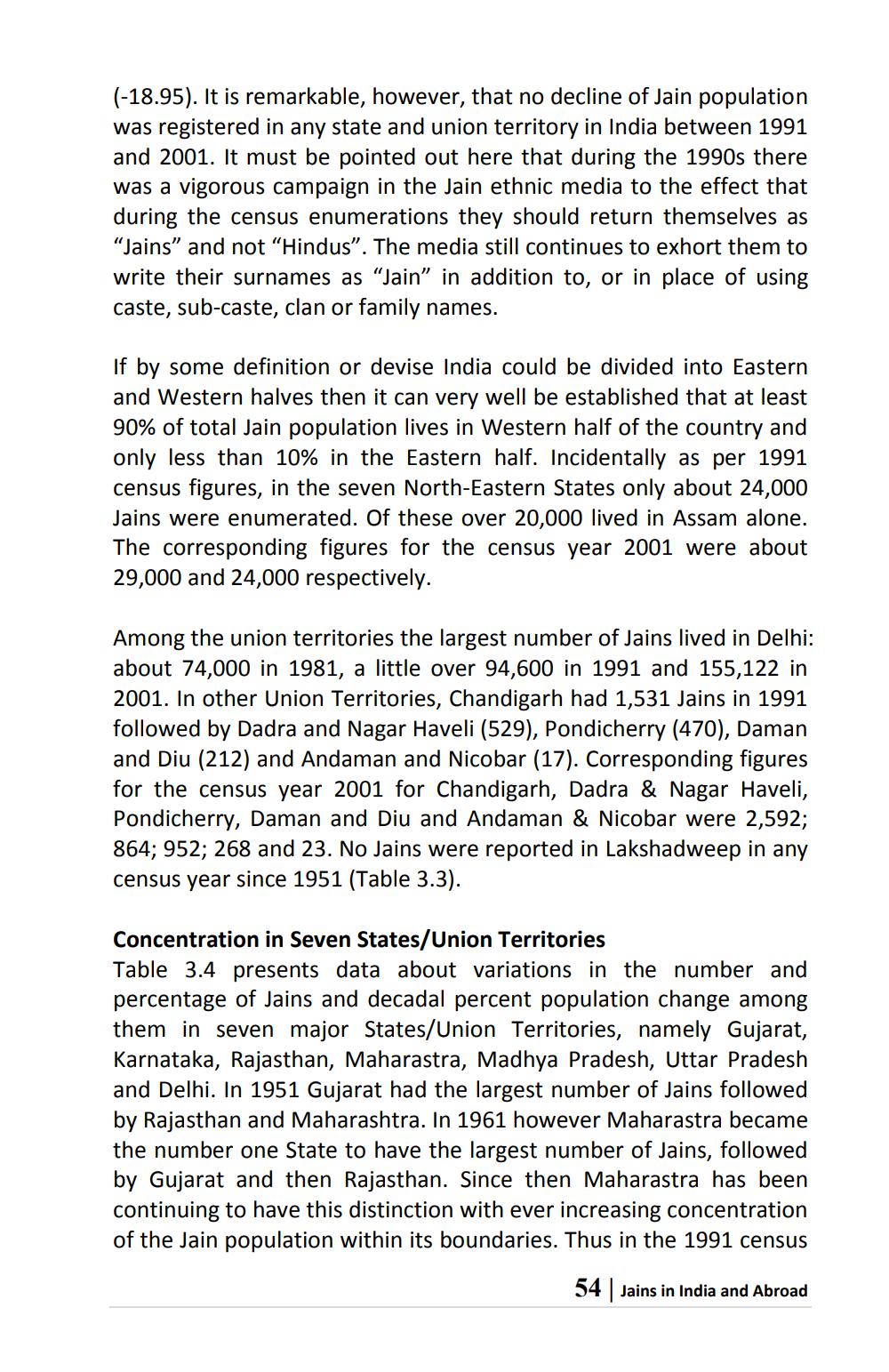________________
(-18.95). It is remarkable, however, that no decline of Jain population was registered in any state and union territory in India between 1991 and 2001. It must be pointed out here that during the 1990s there was a vigorous campaign in the Jain ethnic media to the effect that during the census enumerations they should return themselves as "Jains" and not "Hindus". The media still continues to exhort them to write their surnames as "Jain” in addition to, or in place of using caste, sub-caste, clan or family names.
If by some definition or devise India could be divided into Eastern and Western halves then it can very well be established that at least 90% of total Jain population lives in Western half of the country and only less than 10% in the Eastern half. Incidentally as per 1991 census figures, in the seven North-Eastern States only about 24,000 Jains were enumerated. Of these over 20,000 lived in Assam alone. The corresponding figures for the census year 2001 were about 29,000 and 24,000 respectively.
Among the union territories the largest number of Jains lived in Delhi: about 74,000 in 1981, a little over 94,600 in 1991 and 155,122 in 2001. In other Union Territories, Chandigarh had 1,531 Jains in 1991 followed by Dadra and Nagar Haveli (529), Pondicherry (470), Daman and Diu (212) and Andaman and Nicobar (17). Corresponding figures for the census year 2001 for Chandigarh, Dadra & Nagar Haveli, Pondicherry, Daman and Diu and Andaman & Nicobar were 2,592; 864; 952; 268 and 23. No Jains were reported in Lakshadweep in any census year since 1951 (Table 3.3).
Concentration in Seven States/Union Territories Table 3.4 presents data about variations in the number and percentage of Jains and decadal percent population change among them in seven major States/Union Territories, namely Gujarat, Karnataka, Rajasthan, Maharastra, Madhya Pradesh, Uttar Pradesh and Delhi. In 1951 Gujarat had the largest number of Jains followed by Rajasthan and Maharashtra. In 1961 however Maharastra became the number one State to have the largest number of Jains, followed by Gujarat and then Rajasthan. Since then Maharastra has been continuing to have this distinction with ever increasing concentration of the Jain population within its boundaries. Thus in the 1991 census
54 | Jains in India and Abroad




